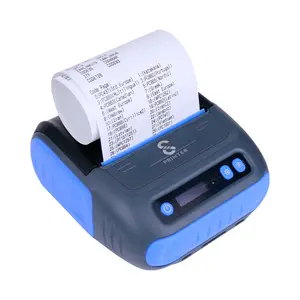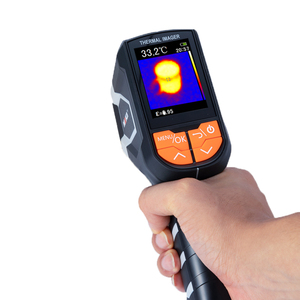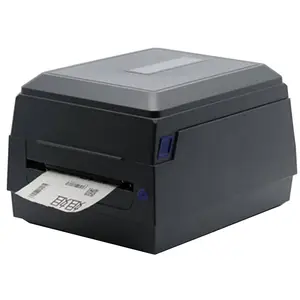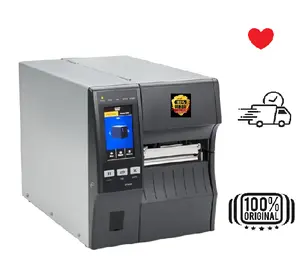The taxi meter thermal printer stands as an indispensable tool in today's transport sector, playing a vital role in the instantaneous issuance of receipts and the monitoring of fares. Crafted to endure the challenges of on-the-go use, these printers offer steadfast and efficient printing capabilities for cab drivers and fleet managers alike. Alibaba.com presents an array of these specialized devices, addressing the varied demands of the transport industry.
Types of Taxi Meter Thermal Printers
Varying models of taxi meter thermal printers fulfill distinct requirements within the transport realm. Some are tailored for high-traffic settings, boasting swifter printing speeds and greater paper storage. Compact versions are ideal for smaller conveyances or services with less frequent printing needs. Additionally, certain models come equipped with wireless features, enabling effortless integration with mobile applications and cloud services, thus offering contemporary solutions for fare calculation and receipt production.
Structure and Components
A taxi meter thermal printer comprises a complex array of parts functioning in harmony. At its heart lies a thermal print head, which employs heat to imprint images onto specialized paper. This mechanism is complemented by a platen roller that propels the paper through the apparatus. A control board orchestrates the printing operation, decoding signals from the taxi meter. Moreover, a robust casing shields the inner workings from daily wear and tear, while a conveniently accessible section permits swift paper roll exchanges.
Materials and Properties
The construction of taxi meter thermal printers utilizes materials selected for their resilience and efficacy. Premium plastics form a rugged shell capable of resisting impacts and abrasions. Metallic elements are incorporated for their durability and thermal resistance, particularly within the print head. The thermal paper is specially coated to react to heat, negating the necessity for ink and thus streamlining the printing process.
Business Usages and Applications
Taxi meter thermal printers are crucial across various commercial contexts, from established cab firms to ride-hailing platforms. They furnish passengers with precise, itemized receipts that detail the fare, distance, and duration. In the logistics sector, these printers are instrumental for producing travel logs and confirmation of deliveries. Their reliability and efficiency bolster business transparency with clientele, fostering trust and encouraging repeat patronage.
Functions and Tasks
The chief role of a taxi meter thermal printer is to instantly generate printed records of taxi charges. These units are engineered for rapid, quiet receipt issuance, ensuring a comfortable experience for both operator and client. Sophisticated models may incorporate features like wireless connectivity for digital record maintenance or the capability to print summaries for the driver's daily reports.
Features and Unique Selling Points
Notable attributes of taxi meter thermal printers encompass their diminutive stature, essential for integration into the confined spaces of a vehicle's dashboard. Select models boast Bluetooth capabilities, facilitating cordless printing from smartphones or tablets. Others feature illuminated displays for nocturnal ease of use, and some are equipped with batteries designed for prolonged operation during transit. These distinctive qualities differentiate them from standard printers and render them highly desirable within the transport sector.
Benefits and Positive Outcomes
Advantages of deploying a taxi meter thermal printer include augmented efficiency in fare processing and heightened client satisfaction via the provision of lucid receipts. For enterprises, these printers streamline workflows and diminish fare contention likelihood. They also enhance the professional image, potentially tipping the scales for customers when selecting among transport services.
How to Use and Operate Effectively
Effective operation of a taxi meter thermal printer necessitates familiarity with its functionalities and configurations. Operators should be adept at loading paper properly, executing rudimentary troubleshooting, and harnessing any wireless capabilities. For optimal performance, printers should be situated within the driver's easy reach, enabling swift receipt issuance without diverting attention from the road.
How to Choose the Right Model
Selecting an appropriate taxi meter thermal printer involves evaluating trip frequency, connectivity requisites, and the spatial constraints within the vehicle. It is crucial to opt for a model that can sustain the anticipated workload and is congruent with the taxi meter and any applications or services employed by the firm.
How to Clean and Maintain
Upkeep of a taxi meter thermal printer entails periodic cleansing of its exterior with a gentle cloth to avert dust accumulation. The thermal print head should be purified with a specialized cleaning implement to eradicate any detritus that might impair print clarity. It is also advisable to inspect paper pathways for obstructions to avert jams.
How to Install
Setting up a taxi meter thermal printer typically requires anchoring the device in a spot that is reachable for the driver yet does not impede vehicle controls. It should be linked to the taxi meter's power and data outputs, adhering to the manufacturer's guidelines to guarantee correct operation.
Target Audience and Needs
The intended demographic for taxi meter thermal printers spans taxi and ride-share drivers, fleet managers, and transport service enterprises. These devices satisfy the needs of such users by offering a dependable method for receipt issuance, fare tracking, and precise financial record-keeping, all essential for the seamless conduct of their operations.
What are the key features to look for in a taxi meter thermal printer?
Essential characteristics to consider encompass print velocity, paper size adaptability, robustness, user-friendliness, and connectivity options. A resilient taxi meter thermal printer should strike a balance among these aspects to meet the demands of daily taxi service.
How does a thermal printer benefit the daily operations of a taxi service?
A thermal printer enhances taxi operations by ensuring swift, dependable, and superior receipt production, thus elevating the customer experience and streamlining transactions. The efficiency and minimal upkeep of a taxi meter thermal printer also lead to lower operational expenditures.
What should businesses consider when integrating new thermal printers with their existing taxi meters?
When incorporating new thermal printers, businesses should weigh system compatibility, the printer's physical fit within the vehicle, and the simplicity of integration. It is imperative to confirm that the new taxi meter thermal printer can effectively communicate with the taxi meter and that drivers can manage it with minimal instruction.






































 浙公网安备 33010002000092号
浙公网安备 33010002000092号 浙B2-20120091-4
浙B2-20120091-4